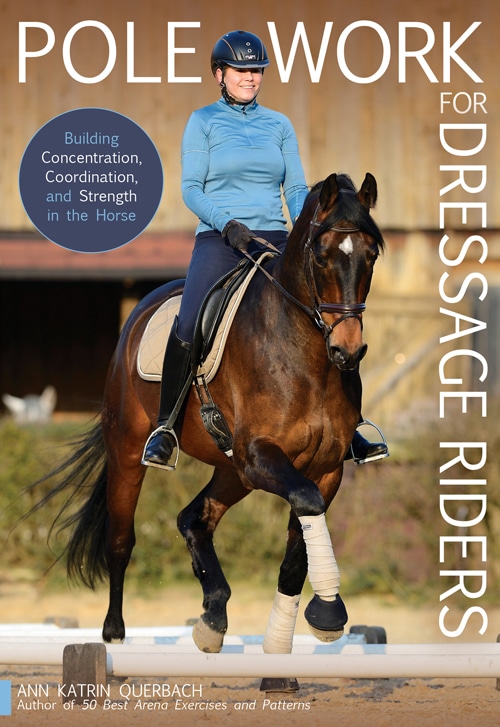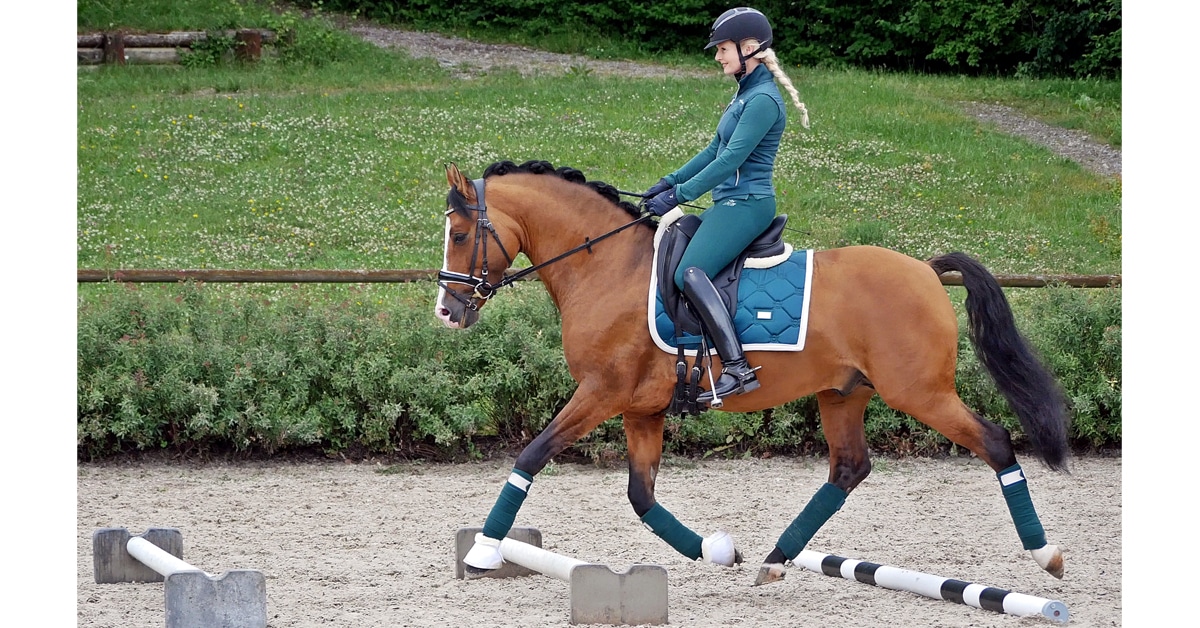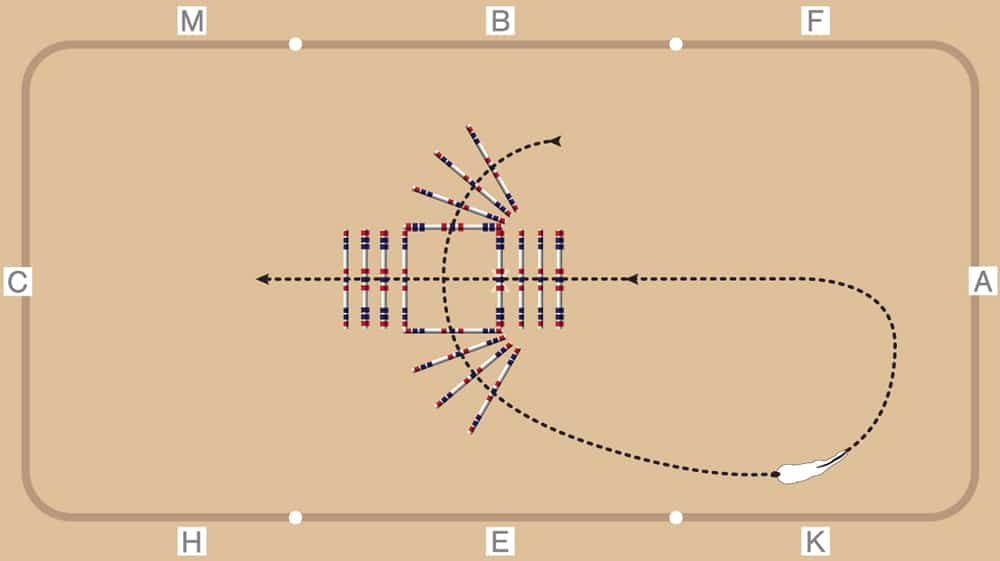There are many roads that lead to Rome. Therefore, you can get creative about how you combine the poles. The correct distance is always important. Make sure you and your horse stay motivated and ready to try new things.
There are no limits to your imagination.

There are many possibilities and creative ways to set up combinations. In order to find the correct combinations for your horse, it’s important to consider your horse’s current level of training.
Build on your experience with the previous exercises and tips when coming up with combinations. Here’s what is most important to keep in mind:
If your horse has a low level of training or needs to develop more strength and endurance, the first two exercises in the previous chapters may have worked well for you.
In this case, you should not set up more than four poles per line as part of a combination. Leave enough space between each line of poles to allow your horse to recover and come back to your aids. You can also use the more difficult exercises in this chapter—just be mindful and design your combination in such a way that your horse has enough time to take a break between short lines of poles. Expand the number of short lines gradually over the course of several weeks.
Moving over diagonally positioned poles requires coordination from your horse, and you should be able to ride in a frame easily. Don’t raise diagonally positioned poles!
Working over poles that are raised on both sides, or cavalletti on a low setting, requires a higher level of training for your horse. These exercises improve cadence and activate the ventral muscle chain. The hindquarters drop lower, and the forehand has to rise. The horse should easily go in a frame and be straight. The goals for these exercises are mostly conditioning and muscle development.
Poles that are raised on one side, alternating sides, help the horse find the center of the poles by creating a visual effect of crossing when viewed from the front.
Keeping the horse in a frame is much easier. They serve as good transitional exercises between poles on the ground and poles that are raised on both sides.
Poles that are raised on the outside help the horse lift the outside shoulder. The outside shoulder girdle is strengthened and therefore helps the horse achieve straightness. This is a good exercise to support straightness in your horse, and a good schooling method for horses who push to the outside. To learn more about this topic, read the section Naturally Crooked or Nice and Straight? (p. 56).
In conjunction with a thorough analysis of your horse and the associated training tools, these combinations can infuse fun into your training and turn into a real pole workout for the horse. Still, challenges may arise. Since many of the difficulties will fall into certain broad categories, I am presenting the most common ones and their solutions here.
When you encounter problems with the exercises, try switching to an easier exercise or reducing the number of poles. You can also practice the exercises without any raised poles, and once your horse has mastered that variation, add raised poles back into your training.
Please don’t overwhelm your horse! Build in many breaks. Breaks make the most sense after your horse has performed an exercise correctly—this way, your horse will stay motivated.
Horses are creatures of habit. Repeat the exercises often and revisit the same exercise again and again. Even once you’ve read and practiced all exercises in this book, your horse will benefit greatly from revisiting the very first exercises. Don’t switch up the exercises every day. If your horse has difficulty mastering long lines of poles, reduce the number of poles you are using, or jump back to earlier chapters in the book and focus on conditioning and developing your horse’s musculature.
If your horse falls to the outside consistently, you may not be framing your horse with the outside aids correctly, you may sit crookedly, or your horse may need support such as raising the poles at the outside ends.
If your horse falls to the inside, your inside leg may not provide enough support. Maybe the horse is trying to evade work, or needs more support from your inside leg. In this case, you should raise the poles at the inside end.
If your horse speeds up between the pole lines, his musculature may be lacking. Often horses are unable to use their musculature effectively over a longer period of time, and as a result they will fall on to the forehand. In order to make it over the poles, the hind end is raised or tensed, and the horse speeds up. Here, too, it’s important to raise the level of difficulty slowly. Help your horse with half-halts and sufficient breaks for recovery time.
These combinations are the most fun to practice with somebody else or in a bigger group. Setup and breakdown are quicker, and you can help each other. Make sure levels of training aren’t too different across the group.
Combo 1
This combination consists of straight and bending lines. Position the poles in the middle of the arena as indicated in the diagram. This exercise can be done in the walk or trot.
Make sure to choose the correct distances for the chosen gait:
At the walk: about 2.5 ft (.8m)
At the trot: approx. 4.25 ft (1.3m)
Shorten for ponies
***
Order your copy of ‘Pole Work for Dressage Riders’ from Trafalgar Square Books here.


